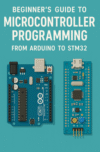The landscape of embedded systems is evolving at an unprecedented pace, driven by advances in semiconductor technology, connectivity standards, and the increasing convergence of hardware and software. These changes are not merely incremental; they represent a fundamental shift in how embedded systems are designed, deployed, and maintained. Understanding these emerging trends is crucial for engineers, product managers, and decision-makers who aim to remain competitive in this rapidly transforming field.
1. Increasing Integration of Artificial Intelligence at the Edge
One of the most significant developments is the migration of artificial intelligence (AI) capabilities from cloud-based platforms to edge devices. This shift is motivated by the need for reduced latency, improved privacy, and lower bandwidth consumption. Edge AI enables real-time decision-making in applications ranging from autonomous vehicles to industrial automation. As microcontrollers and System-on-Chip (SoC) designs incorporate specialized AI accelerators, developers will need to acquire skills in model optimization, quantization, and deployment on constrained hardware.
Preparation Strategy:
- Familiarize yourself with lightweight AI frameworks such as TensorFlow Lite Micro and Edge Impulse.
- Gain proficiency in profiling tools that analyze computational bottlenecks on embedded processors.
- Understand the trade-offs between processing on-device versus in the cloud.
2. The Rise of Heterogeneous Computing Architectures
Future embedded platforms will increasingly combine different types of processing units—CPUs, GPUs, DSPs, FPGAs—on a single die or module. This heterogeneous approach allows developers to allocate workloads to the most suitable processing element, thereby optimizing performance and power efficiency. However, such architectures demand new development methodologies, including parallel programming models and sophisticated scheduling algorithms.
Preparation Strategy:
- Learn hardware description languages (HDLs) and high-level synthesis (HLS) for FPGA programming.
- Develop an understanding of parallel computing concepts and task partitioning.
- Explore frameworks like OpenCL and SYCL for heterogeneous programming.
3. Emphasis on Security-by-Design
As embedded systems increasingly connect to public networks, the attack surface expands dramatically. Security breaches in IoT devices, medical equipment, or industrial controllers can have severe consequences. Future trends will involve embedding hardware-based security primitives—such as secure enclaves, cryptographic co-processors, and hardware root-of-trust—directly into the system design.
Preparation Strategy:
- Study secure boot mechanisms and firmware update protocols.
- Implement end-to-end encryption and mutual authentication in communication protocols.
- Stay informed about emerging standards like PSA Certified and IEC 62443.
4. Greater Adoption of Real-Time Operating Systems (RTOS) with Cloud Integration
RTOS platforms are no longer limited to handling real-time tasks in isolation. They are evolving to integrate with cloud-based analytics, remote configuration, and fleet management services. This hybrid approach merges deterministic control with large-scale data processing capabilities.
Preparation Strategy:
- Acquire experience with modern RTOS platforms such as Zephyr, FreeRTOS, and ThreadX.
- Learn how to implement over-the-air (OTA) updates reliably.
- Understand APIs for cloud platforms like AWS IoT, Azure IoT Hub, and Google Cloud IoT Core.
5. Ultra-Low-Power Design for Sustainable IoT
Energy efficiency is becoming a critical priority, not only for battery-powered devices but also for reducing the overall environmental footprint of large-scale IoT deployments. Future designs will increasingly leverage energy harvesting, advanced sleep modes, and dynamic voltage and frequency scaling (DVFS) to extend operational life.
Preparation Strategy:
- Learn power budgeting techniques and use power analysis tools during development.
- Evaluate microcontrollers with integrated energy measurement units.
- Understand how to balance performance with energy consumption using DVFS and event-driven architectures.
6. Increasing Role of Open Hardware and Open Source Software
The democratization of embedded development is being fueled by open hardware initiatives and permissively licensed software stacks. This trend lowers the barrier to entry, accelerates innovation, and fosters community-driven improvements. However, it also introduces challenges in intellectual property management and long-term maintenance.
Preparation Strategy:
- Participate in open-source embedded projects to gain exposure to best practices.
- Understand licensing implications for commercial products.
- Evaluate open hardware platforms such as RISC-V for prototyping and production.
Conclusion
The future of embedded systems will be defined by a convergence of AI, heterogeneous computing, security, cloud connectivity, energy efficiency, and open innovation. Preparing for this future requires not only technical adaptability but also a willingness to continuously learn, experiment, and collaborate across disciplines. Engineers who invest in these competencies today will be well-positioned to lead the next generation of embedded solutions.



